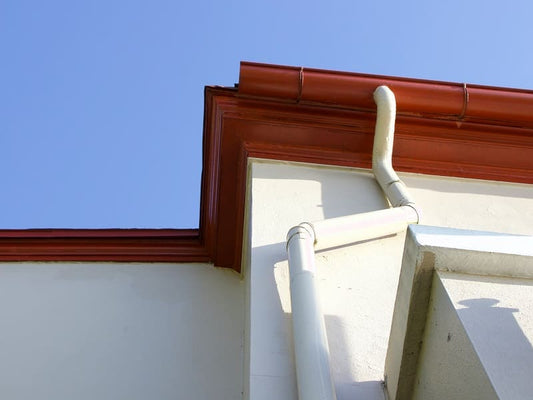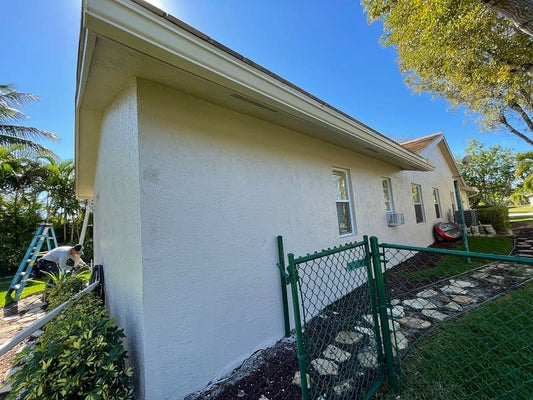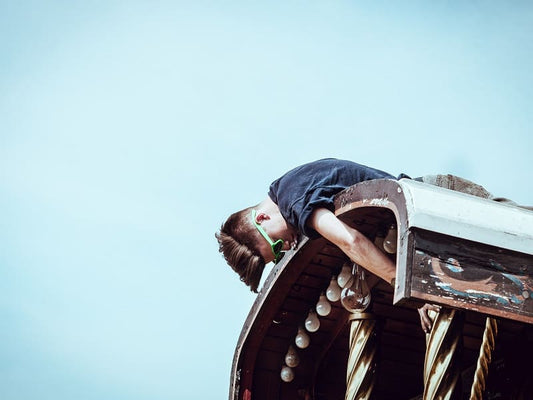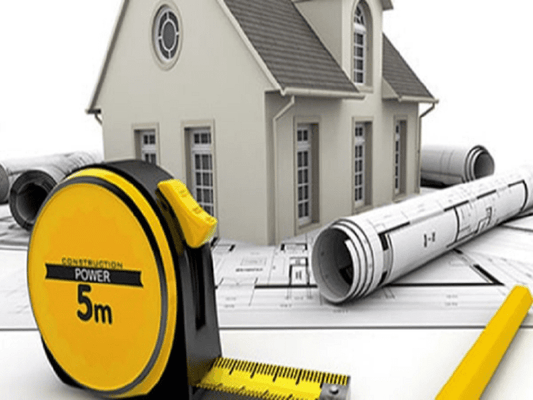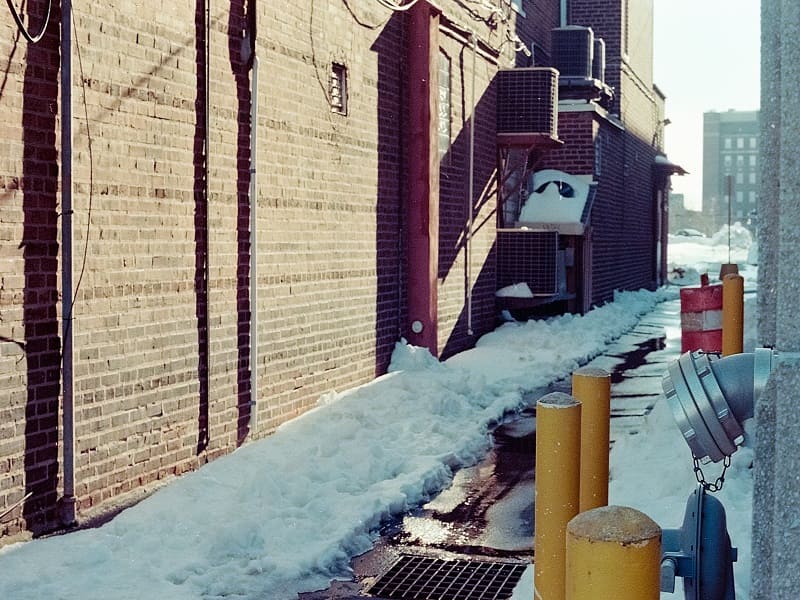
Ice Dams and Gutter Guards- Learn the Truth
Do Gutter Guards Cause Ice Dams?
Ice dams are not only inconvenient and harmful to your property; they may also be hazardous!
An ice dam is a ridge of ice that forms along the edge of the roof of your home and prevents melting snow from draining down. Ice dams may cause problems when water seeps into your home and damages your walls, ceilings, insulation, and other areas that are supposed to be dry.
In this article, we will learn, “Do gutter leaf guards cause ice dams? What creates ice dams, and how to prevent them? So, keep reading!
What Are the Causes of Ice Dams?
Have you ever glanced up at your roof and noticed that certain places are dry while others are snow-covered?
There must be snow on the roof for an ice dam to form, and upper areas of the roof must be above 32 degrees Fahrenheit, while lower surfaces must be below 32 degrees Fahrenheit.
Indoor heating rises through the ceiling and heats the surface of the attic. As the snow melts on the upper parts of your roof, it will begin to fall towards the edge of your roof. It will freeze when it touches the cooler part of your roof.
Can Gutter Guards Lead To Ice Dams?
Some gutter protection measures may contribute to the formation of an ice dam. Here are some of the reasons: They may be short-lasting. A cubic foot of ice weighs about sixty pounds. If the gutter guards are not sturdy enough to resist this weight, they will buckle and become an impediment in the gutter system. When this happens, an ice dam forms, which can cause damage to the home. Reverse curve gutter covers immediately freeze on top and in the aperture of the guard's nose. When this happens, the water has nowhere to go, and a dam forms.
This usually results in quite enormous icicles. Raking snow off a roof will be ineffective since the aperture on the front nose is still frozen. When this happens, it cuts off any water to enter and naturally evaporates to the ground.
Aluminum gutter guard covers with micro screens are a preferable option. Ice and snow can accumulate, although they are easier to remove off the reverse curve covers. Once the screen is exposed to the light, the ice and snow melt fast. This allows water to flow and prevents the gutter system from freezing.
What Kinds Of Damage Will Ice Dams Do?
Ice dams endanger the home and the people below. An ice dam can slip from the edge of a roof at any time and damage a person or kid below. Furthermore, dripping water might form puddles on your walks, which can freeze over and create a tripping hazard. Snow might avalanche from the roof, damaging your automobiles or property. Furthermore, ice dams can cause the following house damage:
l Rot in the fascia
l Downspout and gutter damage
l Water stains on sheetrock
l Insulation deterioration
l Flooding in the basement
l Damage to the roof and shingles
And so much more!
For these reasons, it is critical to avoid ice dams before they form.
How To Avoid Ice Dams?
Ice dams can be avoided by reducing heat loss from the residence. If you have ice dams, it is most likely due to problems managing heat loss from your home.
Follow these basic methods to avoid ice dams:
l Use Heated Cables
Heated wires, which are attached with clips along the roof's edge in a zigzag pattern, assist in avoiding ice dams, which raise tiles and create leaks. This approach allows you to equalize the temperature of the roof by heating it from the outside rather than blowing cold air in from the inside. Just be sure you put in the cables before bad weather arrives.
l Rake The Snowfall
While standing securely on the ground, remove snow using a long-handled aluminum roof rake. A rake with wheels, such as the one illustrated above, will immediately modify the temperature of your roof's exterior without harming the shingles.
l Install Attic Insulation
The warmth of your home and the cold air outside cause the snow and ice to freeze and melt. Investing in quality attic insulation will limit the chance for ice dams to develop and save you money on your energy bill by preventing heat transmission to the snow on your roof and keeping the energy in your house where it's needed.
l Deicing Techniques
You can even mitigate the harm once the dam has been built by wearing a pantyhose. Fill a discarded pair of pantyhose with a calcium chloride ice melter. Install the hose so that it crosses the ice dam and hangs over your gutter.
Push it into place with a long-handled garden rake if needed. The calcium chloride will melt through the snow and ice, allowing water to move down into the gutters or off the roof.
Following that, a list of long-term remedies to assist you in permanently eliminating ice jams.
What To Do If An Ice Dam Has Already Formed?
Remove the snow off the roof if an ice dam has already developed. Snow on the roof is required for the creation of ice dams. To clear additional snow from your roof line, use a roof rake and a push broom.
Do Gutter Guards Help To Prevent Ice Dams?
The quick answer? Not quite. Gutter guards prevent the accumulation of debris into your gutters, which will help to avoid ice dams, but they will still freeze during the coldest months of the year. This permits thick, heavy ice ridges to build along your roof's eaves. Before the temperature lowers, there are a few things you should be aware of about your gutters, roof, and ice dams.
Conclusion
Because your gutters are your home's first line of defense against water damage, it's critical to keep them clear and clog-free not only during the winter but all year. Ice dams can represent a substantial hazard to your property, producing a variety of damages. While gutter guards can assist in keeping gutters clean, they are not a surefire solution to ice dams. Proper insulation and ventilation are critical in preventing them from forming. Regular maintenance and prompt action may reduce the hazards connected with ice dams, keeping your house safe and secure.
FAQs
1. Are Gutter Guards Good Or Bad?
Ice Dams may rip gutters and dislodge shingles, causing water to back up and spill into your home. The consequences aren't pretty: peeling paint, warped flooring, and discolored and drooping ceilings. Moreover, Damp attic insulation attracts mold and mildew.
2. Why Do Ice Dams Form? Do Gutter Covers Cause Ice Dams?
Ice dams can be caused by one of three factors:
- Inadequate attic ventilation
- Inadequate air sealing
- Inadequate or unequal attic insulation

